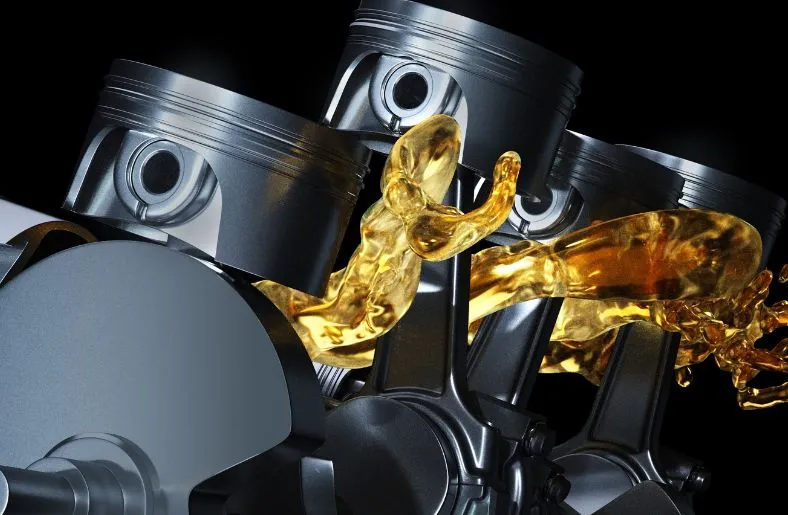Choosing the right motor oil for your vehicle is crucial for its optimal performance and longevity. One of the most common dilemmas car owners face, especially in regions with scorching hot weather, is whether to use 0W-30 or 5W-30 motor oil. Both options have their advantages and disadvantages, and the choice you make can significantly impact your engine’s health and overall efficiency.
In this comprehensive guide, we will delve deep into the world of motor oils, exploring their properties, the comparison between 0W-30 vs 5W-30 for hot weather, and which one is the better choice for your vehicle.
Table of Contents
Motor Oil Viscosity?
Before we dive into the specifics of 0W-30 and 5W-30 motor oils, it’s essential to grasp the concept of viscosity and how it relates to engine lubrication. Viscosity refers to a fluid’s resistance to flow. In the context of motor oil, it determines how effectively the oil can flow and lubricate engine components, especially when subjected to temperature variations.
Motor oil viscosity is usually indicated by a combination of numbers and letters, such as 0W-30 or 5W-30. Let’s break down what these numbers and letters mean:
- The first number (0W or 5W): This represents the oil’s viscosity at cold temperatures. Lower numbers indicate thinner oil that flows more easily when cold. The “W” stands for “winter” and signifies that the oil has been tested at low temperatures.
- The second number (30): This indicates the oil’s viscosity at operating temperature, which is typically around 100 degrees Celsius or 212 degrees Fahrenheit. Higher numbers indicate thicker oil that provides better protection at high temperatures.
The Role of Motor Oil in Hot Weather
Before we dive into the specifics of 0W-30 vs 5W-30 for hot weather. Let’s first discuss what kind of challenges that hot weather poses to your vehicle’s engine. As the temperature rises, several critical factors come into play:
- Increased Friction: Hot weather can lead to increased friction within the engine, which can cause parts to wear down faster if not properly lubricated.
- Thermal Breakdown: High temperatures can cause motor oil to break down or “cook,” reducing its lubricating properties and potentially damaging the engine.
- Reduced Fuel Efficiency: In extreme heat, engines may experience reduced fuel efficiency if not properly lubricated, leading to increased fuel consumption.
- Oil Evaporation: Hot weather can lead to oil evaporation, reducing the oil level in the engine and potentially causing damage due to insufficient lubrication.
Given these challenges, selecting the right motor oil for hot weather becomes crucial to ensure your engine’s longevity and performance.
OW-30 vs 5W-30 for Hot Weather?
0W-30 Motor Oil: Pros and Cons in Hot Weather
Pros:
- Excellent Cold-Weather Performance: The “0W” in 0W-30 indicates that this oil flows exceptionally well at low temperatures, making it an ideal choice for cold starts in the morning, even in hot climates.
- Versatile for Year-Round Use: 0W-30 is a multi-viscosity oil, meaning it can perform well in both cold and hot weather conditions, making it a versatile choice for regions with extreme temperature variations.
- Fuel Efficiency: Due to its low viscosity at cold temperatures, 0W-30 can help improve fuel efficiency during cold starts, which is beneficial in hot weather when engines might be more prone to overheating.
Cons:
- Thinner at High Temperatures: The downside of 0W-30’s excellent cold-weather performance is that it becomes relatively thinner at high temperatures. In extremely hot weather, this oil might not provide as much protection against friction and wear as a thicker oil.
- Potential for Increased Oil Consumption: In hot climates, 0W-30’s lower viscosity may lead to increased oil consumption, as the oil can evaporate more quickly and may not provide the same level of engine protection.
5W-30 Motor Oil: Pros and Cons in Hot Weather
Pros:
- Better High-Temperature Performance: 5W-30 motor oil is thicker at high temperatures compared to 0W-30, making it better suited for hot weather. It can provide enhanced protection against friction and wear when your engine is running hot.
- Reduced Oil Consumption: Due to its higher viscosity at high temperatures, 5W-30 is less prone to evaporating, resulting in reduced oil consumption, which can be beneficial in hot climates.
- Stable Oil Film: 5W-30 maintains a stable oil film even in high-temperature conditions, ensuring that critical engine components remain properly lubricated.
Cons:
- Cold Weather Performance: While 5W-30 is designed to perform well in hot weather, it may not be as effective in very cold conditions. Cold starts may be slightly more challenging, and the engine may take longer to reach optimal operating temperature.
- Potential for Reduced Fuel Efficiency: The thicker nature of 5W-30 can lead to reduced fuel efficiency during cold starts, although this effect is generally less pronounced than with heavier oils.
Related Guide: Will Grease Damage Car Paint? Debunking Common Myths (2023-2024)
Choosing the Right Motor Oil between OW-30 vs 5W-30 for Hot Weather
The choice between 0W-30 vs 5W-30 for hot weather ultimately depends on several factors:
- Climate: Consider the climate of your region. If you live in an area with predominantly hot weather and mild winters, 5W-30 may be the better choice due to its superior high-temperature performance. Conversely, if you experience extreme cold in the winter, 0W-30’s better cold-weather flow may be advantageous.
- Vehicle Type: The type of vehicle you drive can also influence your choice. Some high-performance or older engines may benefit from the added protection of 5W-30 in hot weather, while newer, more fuel-efficient engines may perform well with 0W-30.
- Manufacturer Recommendations: Always consult your vehicle’s owner’s manual for the manufacturer’s recommended motor oil viscosity. Following these recommendations is essential to maintain your warranty and ensure proper engine performance.
- Driving Conditions: Consider your typical driving conditions. If you do a lot of city driving with frequent stop-and-go traffic in hot weather, 5W-30 may provide better protection against engine wear. On the other hand, if you primarily drive on highways, 0W-30 may suffice.
- Maintenance Habits: Regular oil changes and maintenance play a significant role in your engine’s health. Regardless of the oil you choose, ensure you adhere to the manufacturer’s recommended oil change intervals.
Conclusion
Choosing between 0W-30 vs 5W-30 for hot weather involves a careful evaluation of your climate, vehicle, and driving habits. Both oils have their advantages and disadvantages, with 0W-30 excelling in cold-weather starts and 5W-30 offering better high-temperature protection. Ultimately, following the manufacturer’s recommendations and performing regular maintenance is key to ensuring your engine’s longevity and performance, regardless of the motor oil you select.
In hot weather, making the right choice can help your engine stay cool under pressure and provide you with a smooth, trouble-free driving experience.

